Some babies and toddlers love to eat. And others may have a harder time during feedings. And let me start by saying that every child is so beautifully different!
Getting babies and toddlers to eat without distraction is one of those topics that I come across rather frequently working with children from birth – 3 years.
And here’s the thing. We want our babies to eat so they are nourished. We want them to get their daily nutritional requirements… but your baby is shaking their head, pushing the food away, and you feel like you have tried everything to get just a tiny bit of food inside their mouths. And that can be super tough and stressful!
That said, there is a lot that I have learned about food distraction in my years working with babies + toddlers…
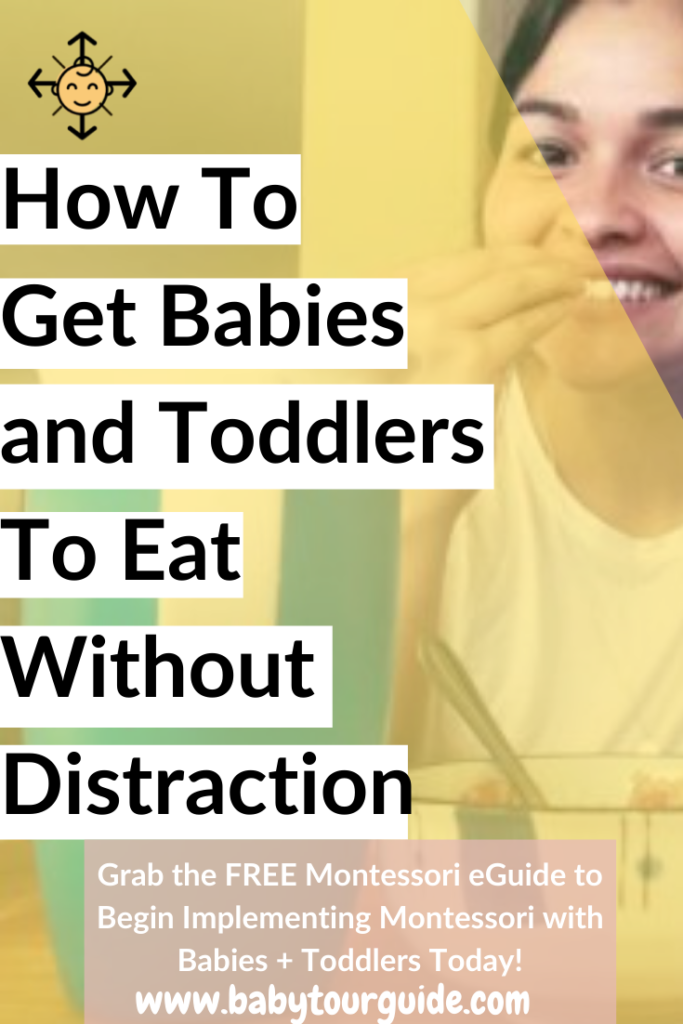
Let’s start with what I mean by food distraction.
By this, I mean the use of outside items to distract, persuade, or redirect their focus to get food into their mouth. Common means of food distraction that I have come across are using phones or tablets to play videos, giving the infant toys during their meal, following them around with a spoon as they play, giving them something more delicious (like puffs or veggie chips), or literally having one parent or caregiver jump around while the other tries to sneak a spoonful into their mouth.
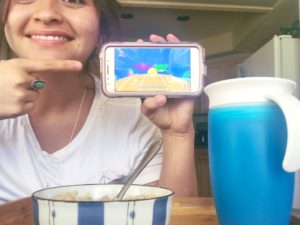
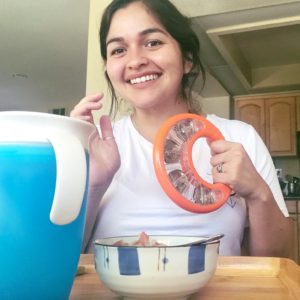
If this is something that you have done or do… it’s okay! It is something I also did when I started working with infants. And let me tell you…the intense worry that your child will not get the nutrients they need is so real.
But over the years and in my research I recognized that even though I had the best intentions in using food distraction (and I know you do too), it may have actually been making it harder for that child to eat now and in the future.
Let’s talk about why.
Babies are constantly making mental connections about their world. This means that they are learning what their world is about, who they can trust, if they can trust themselves, how the environment will react etc. And this concept is applicable to everything they do in the first year!
So when they make their connections about eating and associate all those distractions and stressed adults to the eating process, they move away from initiating eating all by themselves. Because why would they eat that porridge all by themselves if they have a video to focus on something yummier to eat?
Also, infants are very perceptive! They can tell when their trusting adult is worried or anxious. They can tell when a new adult is nervous to hold them, change their diaper, or put them to sleep. And they can definitely tell when we are anxious to feed them! Their perceptiveness is so beautiful, but definitely something we should consider…
So let’s apply this concept to eating!
What we want, is for our infants to make the mental connection that eating time is for eating, and that it is a positive time with you! Since they are still learning and associating things about their world, we have the fun job of teaching them how to categorize and associate. So the goal should be a happy, relaxed interaction between you and baby.
But how to we get there?!
Well to start, try your very best to relax! Trust in yourself, your child, and the process. They will be much more relaxed if you are relaxed and confident.
So if you start this way from day one, your child will grow up knowing that meal time with you is exactly what your expectation is. It is a peaceful meal with you and baby, where you talk, engage, and connect!
But what if we have already been using food distraction?
Back when I was running my class at the Montessori school, I transitioned in hundreds of babies into our program. And many of these infants came from situations where they were distracted to eat. Some of them even had food aversions (where they refused to eat solids at home or it was a difficult power struggle.)
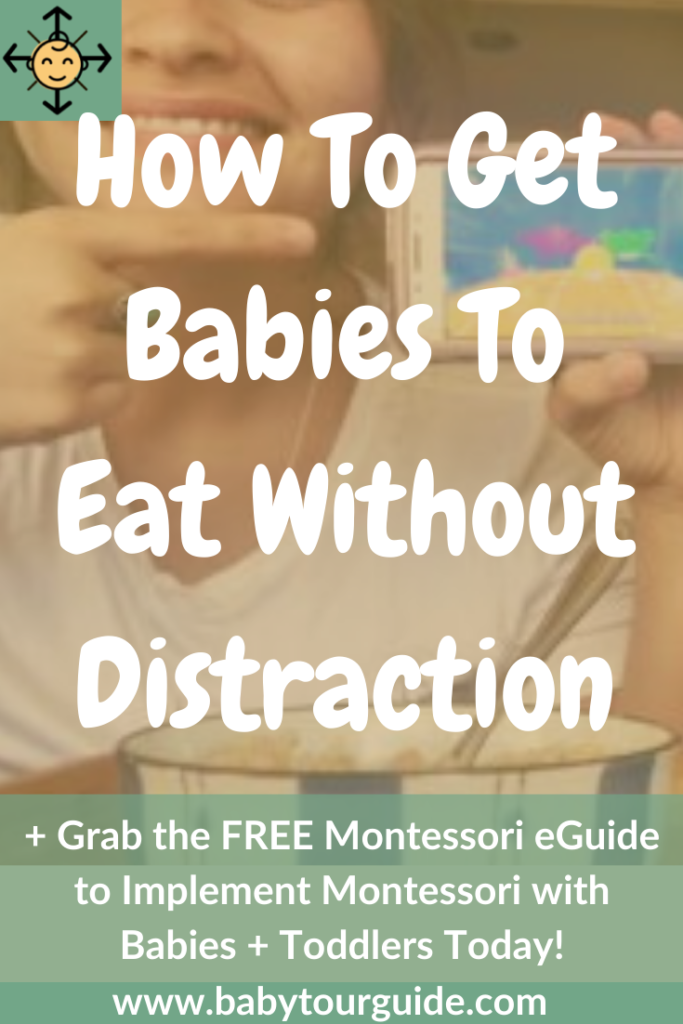
And here is the biggest thing that I learned from those experiences.
Every child will eat! And here’s how…
From the day I started working with a child, I would let them know that it was a loving environment where they were able to to eat, sleep, play, work, sing, dance, and grow! I would earn their trust by meeting their needs and by being loving and confident. But I would not introduce any of the distraction methods (even if it was used at home) because I did not want them to associate those methods to our environment and school routine.
With the children that had an aversion to food or the food process, starting out I would just set some of their food in front of them and sit across from them. Then I would start eating some of my lunch and not look at them at all (not even make eye contact.) I tried to not give it any attention because I wanted them to know that even though I was right there, the food experience was just them, their inner will, and their food. I wanted them to see me completely relaxed and modeling how to eat! (Plus if they saw me eating they were much more likely eat.)
And if the first day all they did was touch the food, that was a success! A big success! That meant were starting to initiate the food on their own! It was always a transition for the kids that had a harder time, but everyday would be a bit closer to our main goal of a calm, self-initiated, eating process. And let me tell you, even in the most extreme of circumstances,
every single child ended up eating.
So when working with the parents whose children had a harder time eating at home without distractions, I started suggesting to change up that routine at home… and it worked really well! Sometimes it would take a bit longer for that home transition, but it always worked once Mommy and Daddy both stuck to their new, relaxed eating routine.
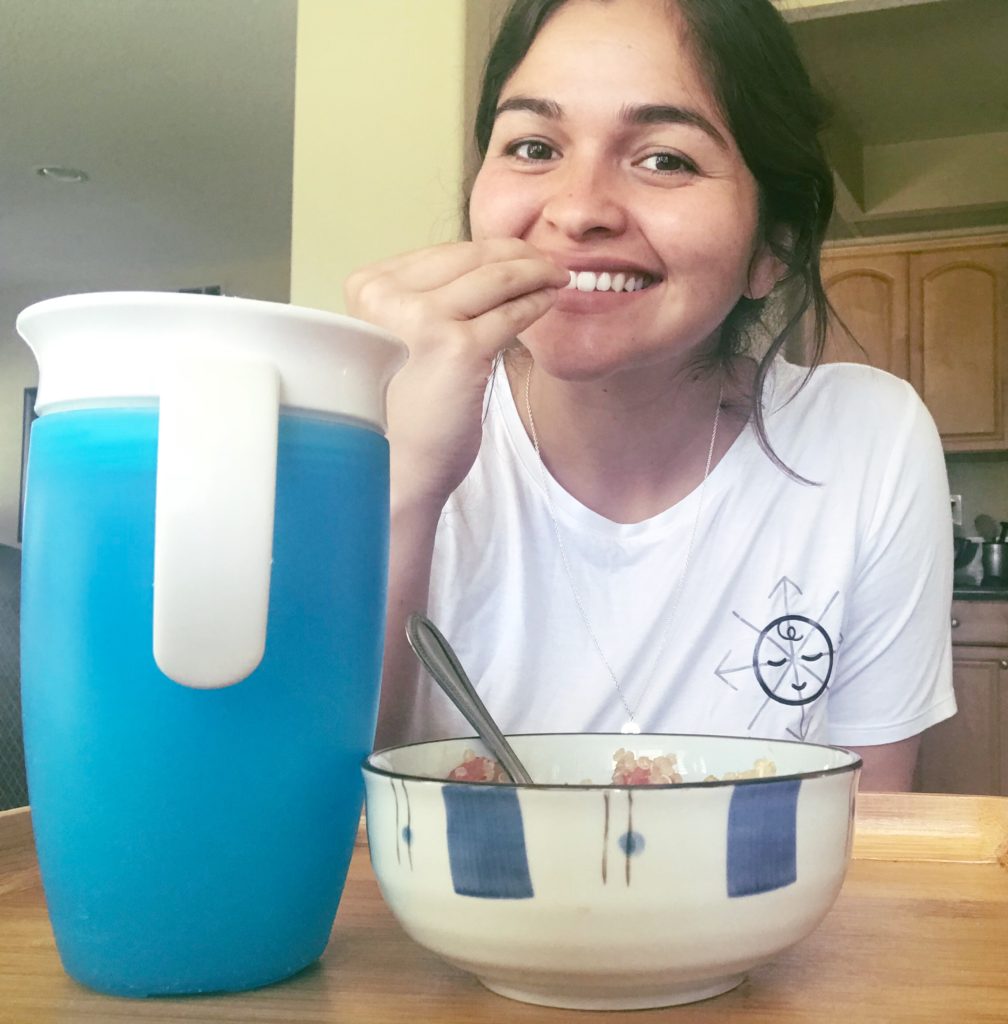
So I encourage you to try it too!
Whether you are planning for the future, have a bun in the oven, or have a baby who just entered this world, keep this in mind!
If using food distractions are already being used and you would like to change things up in their routine at home, you can try getting young Toddlers involved in the cooking process, eating your meals with your baby, letting your baby self-feed, eating at a low table as a family (and letting your baby observe you eat), etc. Change it up the normal routine in some way and then try your best to relax. Send them your calm energy and eat with them! They will eat when they are hungry! 🙂
So my biggest piece of advice is to relax, be confident, and enjoy it… our babies will eat my friends!
Xoxo,
Bianca, Your Baby Tour Guide
You can find some of my favorite Montessori Weaning Materials in my Montessori Baby Shoppe!
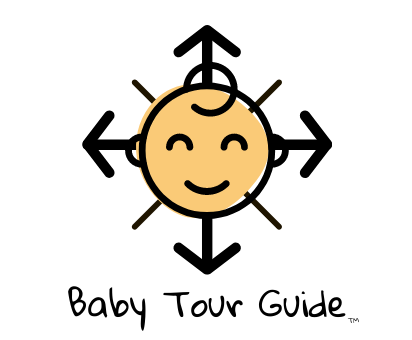
Yahs! Love it! How do I get one of those cute T’s?
The logo is awesome! Now you have to get the compass tatoo!